It is arguably the most famous park in the world, one featured in countless movies and TV shows, that has been a refuge for New Yorkers in the 170 years since it first opened. It was the first of its kind in the country, and one that draws over 40 million visitors a year, the second-most visited destination in the United States behind only Times Square. It’s an iconic landmark and a massive piece of the city’s history. Plus, it’s an attraction full of secrets, surprises and hidden gems, which keeps it new, even for New Yorkers.
Most of all, Central Park is quintessentially New York. Whether for a picnic or a bike ride or ice skating or birdwatching or a stroll during any of the seasons, most everyone in the city has come at least once to this 843-acre green space in the heart of Manhattan to enjoy everything its unique vibe. Whether you’ve never been to Central Park or know all of its rocks and trees by heart, there's always something new to discover. With that in mind, we talked to the Central Park Conservancy’s Juan Jesus, one of the organization’s guides, to put together an in-depth guide to the park and what you can find near the subway stations that run along the park’s borders.
WHERE TO GO
59 St-Columbus Circle (A/B/C/D/1)
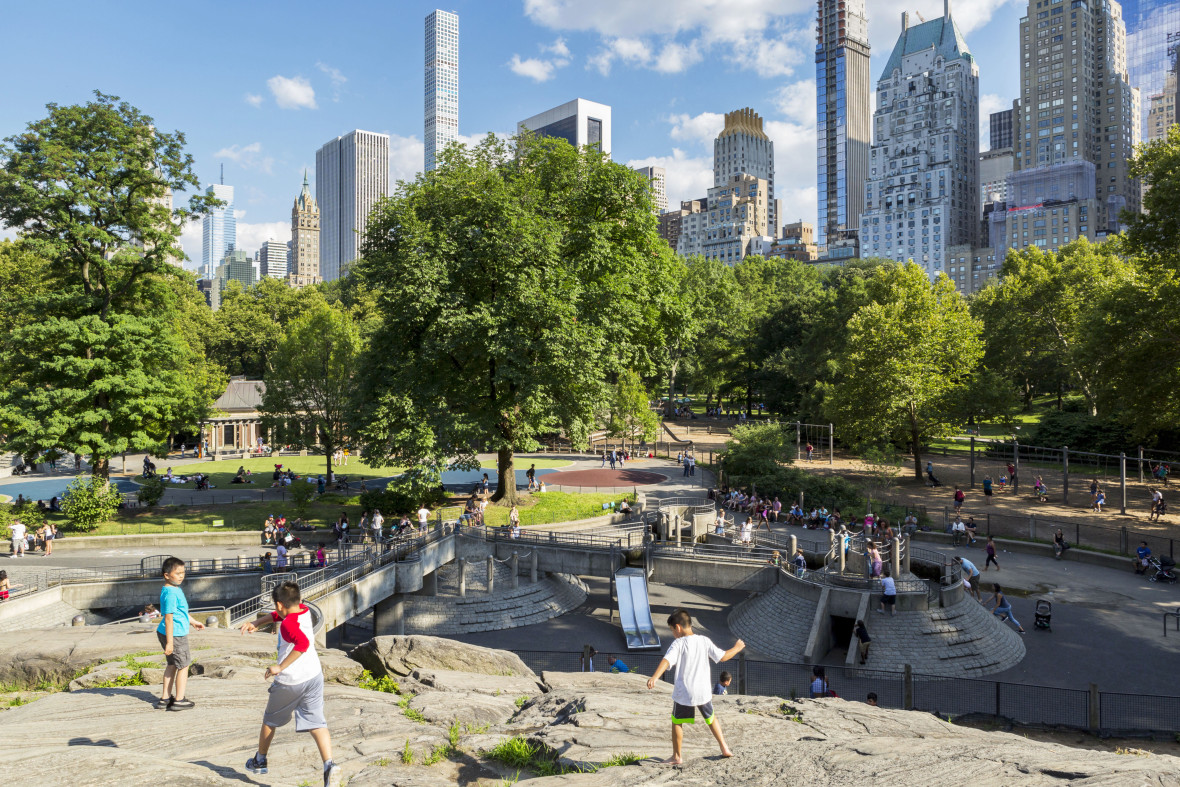
The most popular entrance to Central Park, officially known as Merchants’ Gate, is where you’ll find maps and an information kiosk, making it a good starting point for first-time visitors. You’ll also find the park’s largest and oldest playground: Heckscher Playground. Nearly two acres in size, it was opened in 1926 and has water features along with swings, slides, seesaws and a sandbox, making it a good place to beat the heat.

Close to Heckscher Playground is Umpire Rock, also known as Rat Rock, one of the park’s many rocky outcroppings and a glimpse of what lies underneath the city. Central Park is one of the few places in New York where you can see Manhattan schist, one of the five layers of bedrock that forms the island. The schist is 450 million years old and comprised mainly of feldspar, quartz, and mica, the latter of which provides the slight sparkle you see in the rock. Umpire Rock is popular with climbers, too, so don’t be surprised if you see folks dangling off of it as they make their way across its face.
57 St (F) & 57 St-7 Av (N/R/Q/W)

Walk up Seventh Avenue to 59th Street to find Artists’ Gate and statues of Simon Bolivar, Jose de San Martin, and Jose Marti, leaders of independence movements in Latin America. This entrance is the quickest way to access the Hallett Nature Sanctuary, one of three woodland areas in the park. It’s four acres in size and features trails that wind up a rocky hill. Also close by: Wollman Rink, home to ice skating in the winter and pickleball in the summer.
5 Av/59 St (N/R/W)
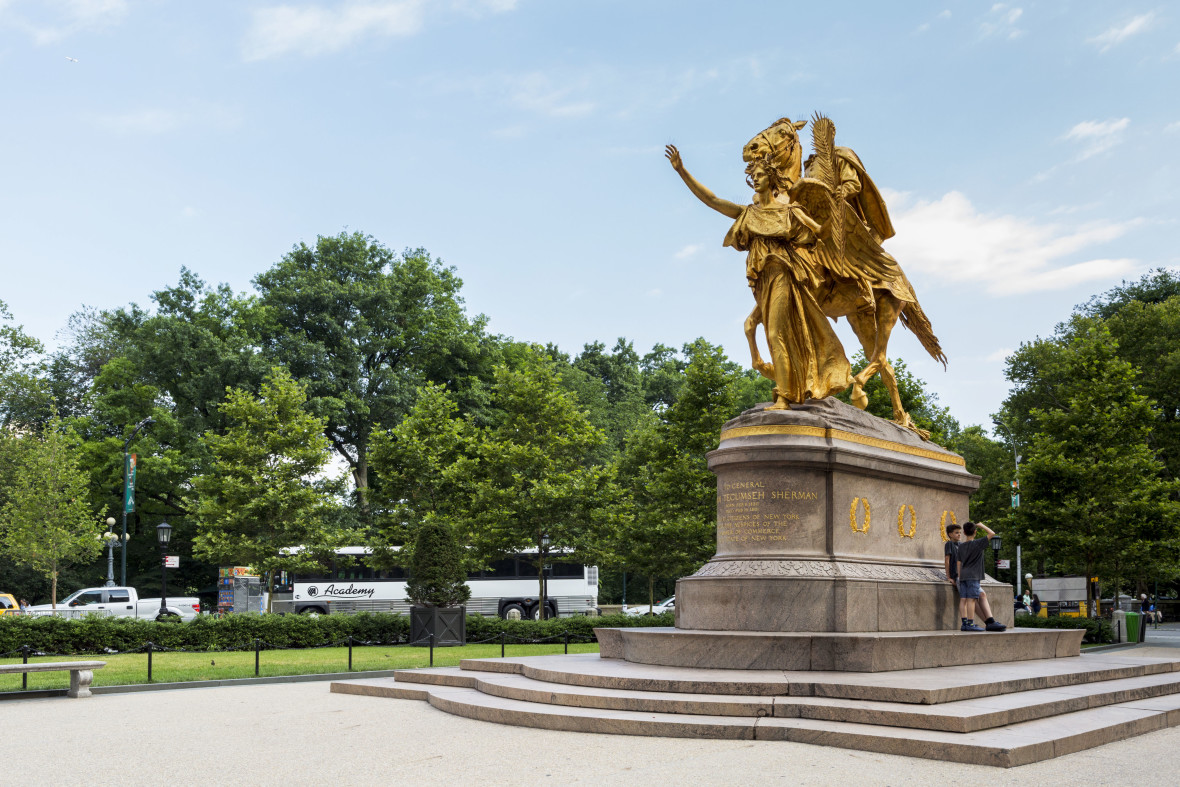
The park’s southeast entrance, just past the gilded statue of Union Army general William Tecumseh Sherman, is located in Doris C. Freedman Plaza, which is also home to temporary sculpture exhibits — a fitting tribute to Freedman, who died in 1981 and was the founder of the city’s Public Art Fund. Don’t miss the nearby Lombard Lamp, a replica of the streetlights on the Lombard Bridge in Hamburg, Germany; it’s located on the steps leading down to the Pond.
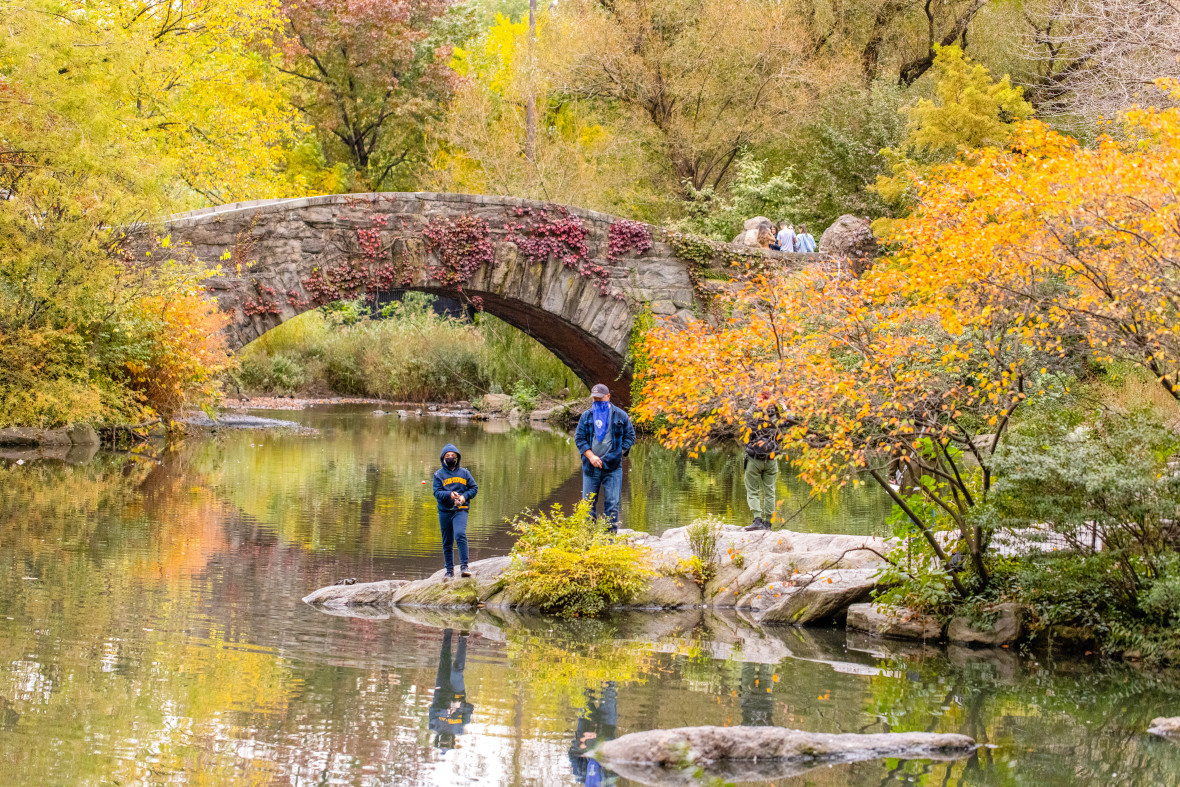
Speaking of the Pond, it’s a short walk from the entrance at 59th Street and Fifth Avenue. The 3.8-acre lake was formed out of low-lying swampland during the park’s creation and was immensely popular with ice skaters during the winters in the 1860s and 70s. Today, it’s a quiet place to sit and observe some nature: waterfowl are plentiful here, as are turtles. Near the top of the Pond is Gapstow Bridge, a stone span built out of schist in 1896 that’s a popular spot for photos. Movie buffs will recognize it from Home Alone 2 as the place where Kevin McAllister first meets the Pigeon Lady.
72 St (B/C)
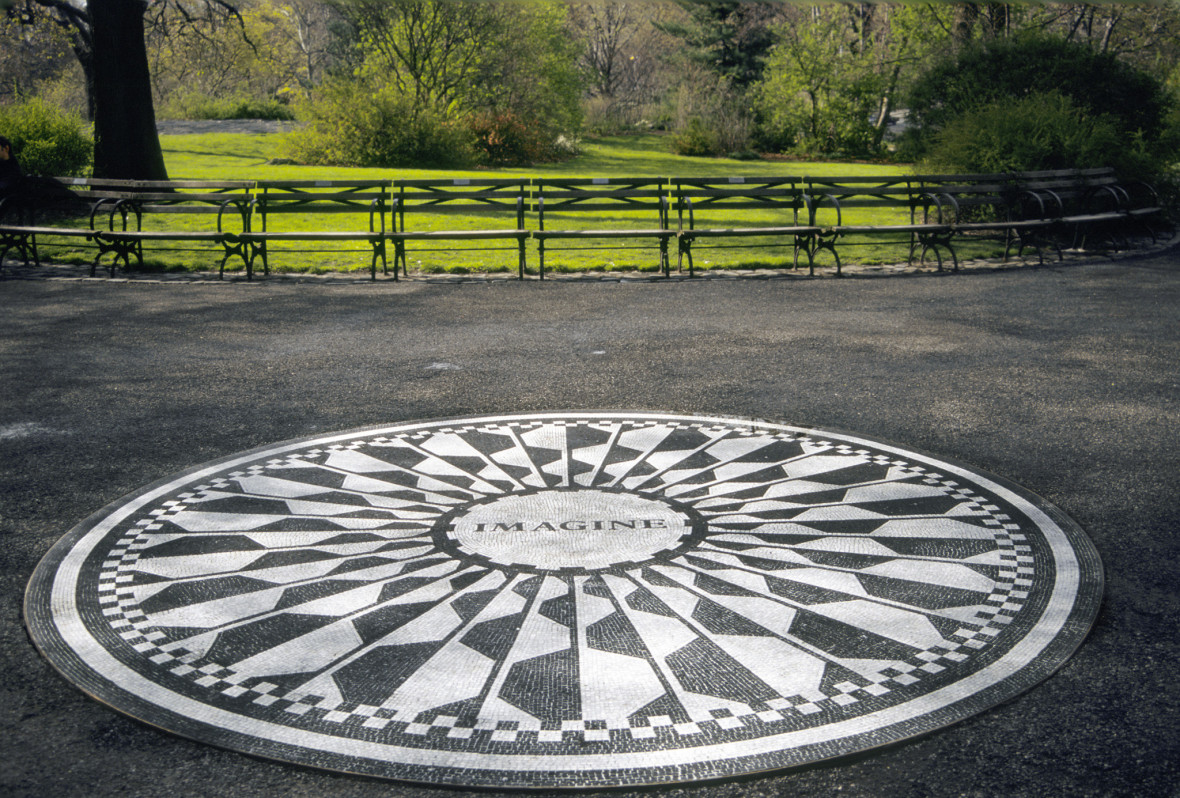
The Strawberry Fields memorial to John Lennon lies just beyond this entrance at 72nd Street across from the Dakota, where Lennon and Yoko Ono lived until his death in 1980. A small mosaic of stones bearing the word “IMAGINE” is a popular gathering spot for Beatles fans. Past Strawberry Fields is the Lake, the largest natural body of water in the park at 20 acres in size. It was the first section of the park to open in 1858; New Yorkers came here to row boats in the spring and summer and go ice skating in the winter. At the southern end of the Lake is Bow Bridge, a Victorian-style span that is one of the most photographed places in the park and connects the southern shore of the Lake with the Ramble on the northern shore. Made of cast iron, Bow Bridge is the longest bride in the park at 87 feet and built by the same company that made the U.S. Capitol dome.

If you follow Terrace Drive from the entrance at 72nd Street, you’ll come to Bethesda Terrace, which Jesus calls “the heart of the park and our social hub.” The Terrace dates to 1867 and was designed to be a gathering space for visitors, with Bethesda Fountain as its centerpiece on the lower level. Between the fountain, the grand staircases leading to it, and the carving and stonework on the Terrace and Arcade (the latter has 16,000 tiles in its ceiling), Bethesda Terrace has the feel of a magnificent Renaissance-style plaza.
81 St-Museum of Natural History (B/C)
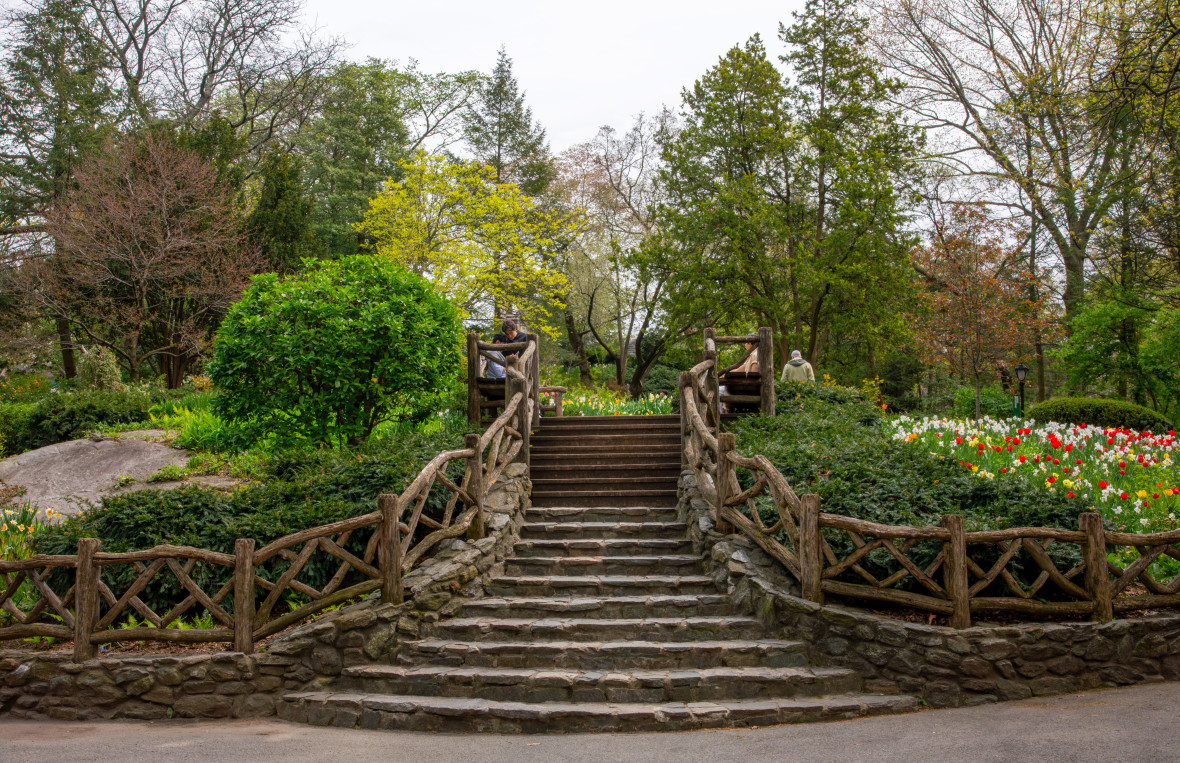
Enter the park by the American Museum of Natural History and you’ll come across two tributes to William Shakespeare. The first is the Shakespeare Garden, dedicated in 1916 and filled with flowers, plants and trees that are mentioned in the Bard’s plays and poems. Then there’s the Delacorte Theater, where every summer the Public Theater stages Shakespeare in the Park, a tradition dating back to 1957. These free productions are some of the most popular events in the city, with would-be theatergoers lining up early in the morning for the first-come, first-serve tickets.

From 81st St, visitors will find easy access to the Ramble, a 36-acre wooded area designed to resemble the forests of upstate New York. “You’re meant to feel like you’re hiking through the Adirondacks or the Catskills,” Jesus says. The Ramble, which was opened in 1859, was intended to be a “wild garden” for city dwellers to experience nature while in the comforts of a public park. Not that the Ramble is a simple stroll: its serpentine paths can be hard to navigate if you’re not familiar with it. “It’s very easy to get lost in there,” Jesus says. For those who don’t mind getting a little lost, the Ramble rewards you with secluded trails and some of the best birdwatching in New York, particularly at Azalea Pond.
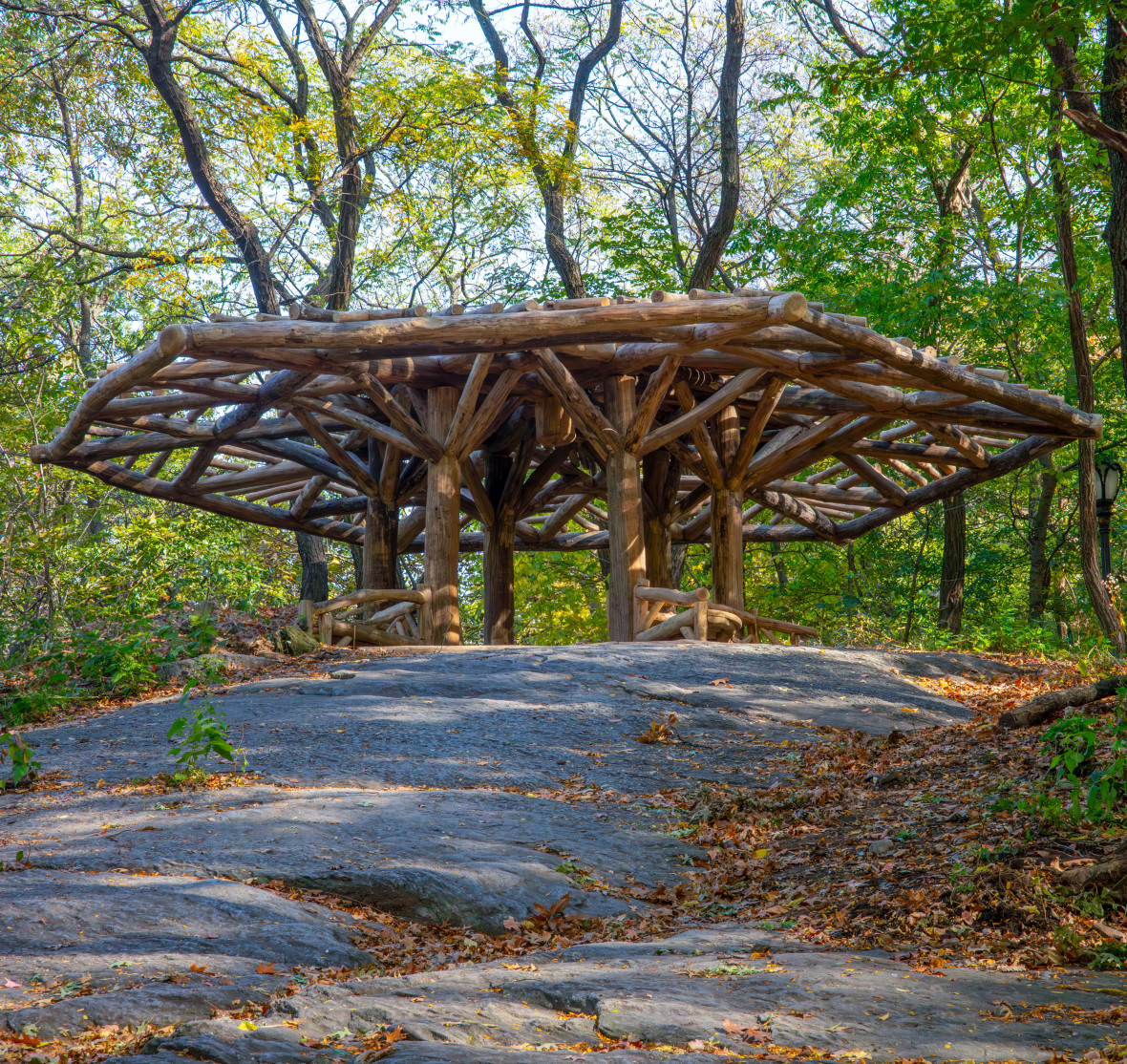
Last but not least, there’s Belvedere Castle and Turtle Pond. The former was built in 1872 on top of Vista Rock, another piece of exposed Manhattan schist, and serves as a lookout point with expansive views of the park in all directions; it also has a visitors' center and gift shop. As for Turtle Pond, its name speaks for itself: five species of turtle call this two-acre body of water home, with red-eared sliders as the most common denizen (and most of those sliders are former pets who were let loose in the park).
86 St (B/C)
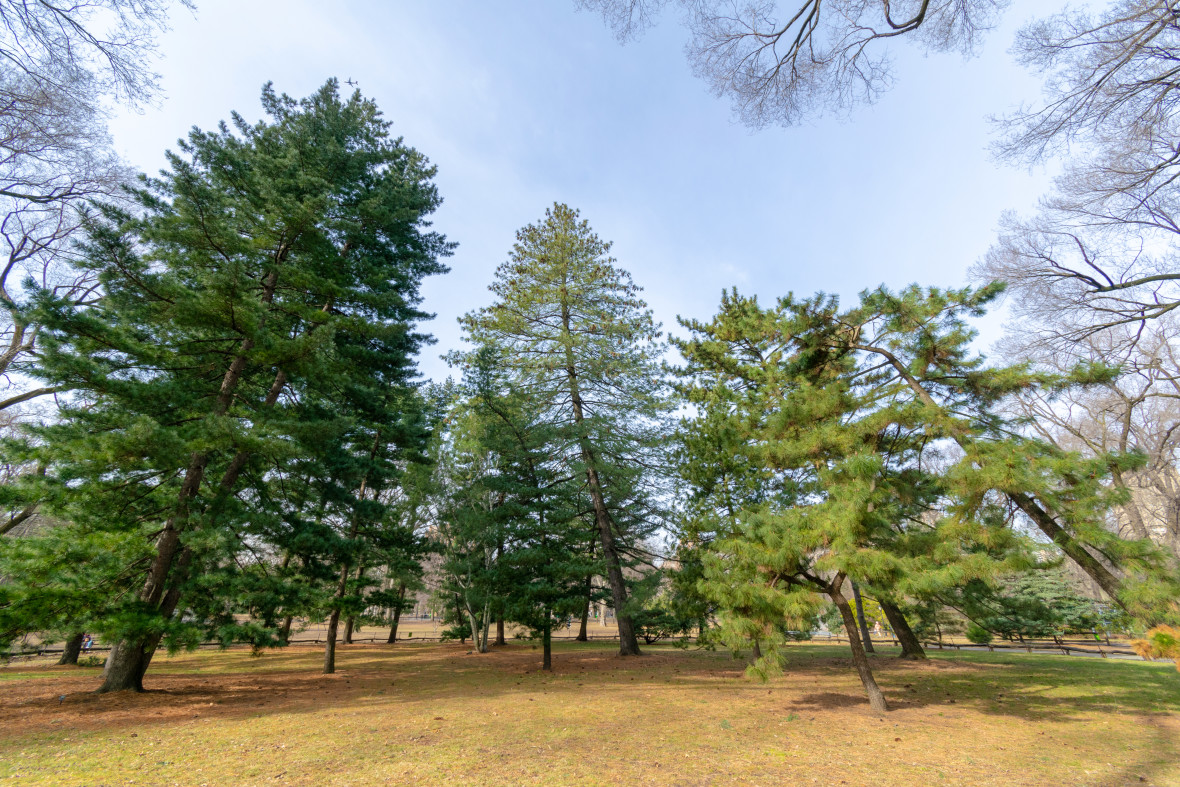
This entrance takes you on another main transversal road and connects you to the Arthur Ross Pinetum. This four-acre arboretum was created in the 1970s as a restoration project, bringing back the evergreen trees that once lined this part of the park but were removed in the late 1800s and replaced with deciduous trees. You’ll find 17 species of evergreen here, as well as a playground that is open to both kids and adults. You’ll find slides and swings and also exercise bars and picnic tables in an unpaved and unfenced space, with everything installed amidst the pines.

Closer to the entrance on 86th Street is the Seneca Village landscape, which marks the spot where a predominantly Black village once stood between 1825 and 1857. Roughly 225 people lived there at the time, and the village had 50 homes, three churches, and a school, but the land was seized by the city via eminent domain in order to build the park, with its inhabitants forced to move.
96 St (B/C)

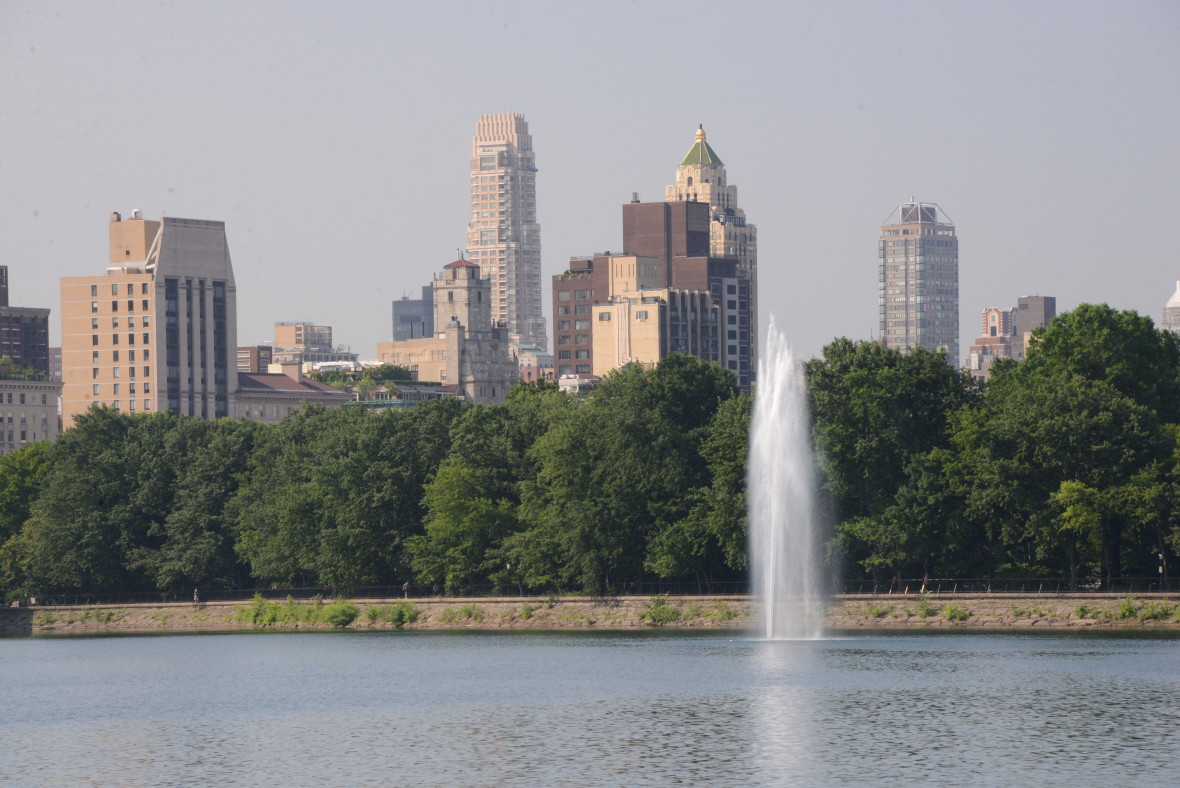
Those looking for a workout should come to the entrance at 96th Street. There, you’ll find 30 tennis courts — 26 clay, four hard court — that are available to use with a permit, as well as space to play pickleball. Basketball and handball courts are in the nearby North Meadow Center, which is currently closed for renovations and will re-open in 2025. Runners can enjoy the 1.5-mile track around the Reservoir, the park’s largest body of water, which was built between 1858 and 1862 and holds more than a billion gallons of water.
103 St (B/C)
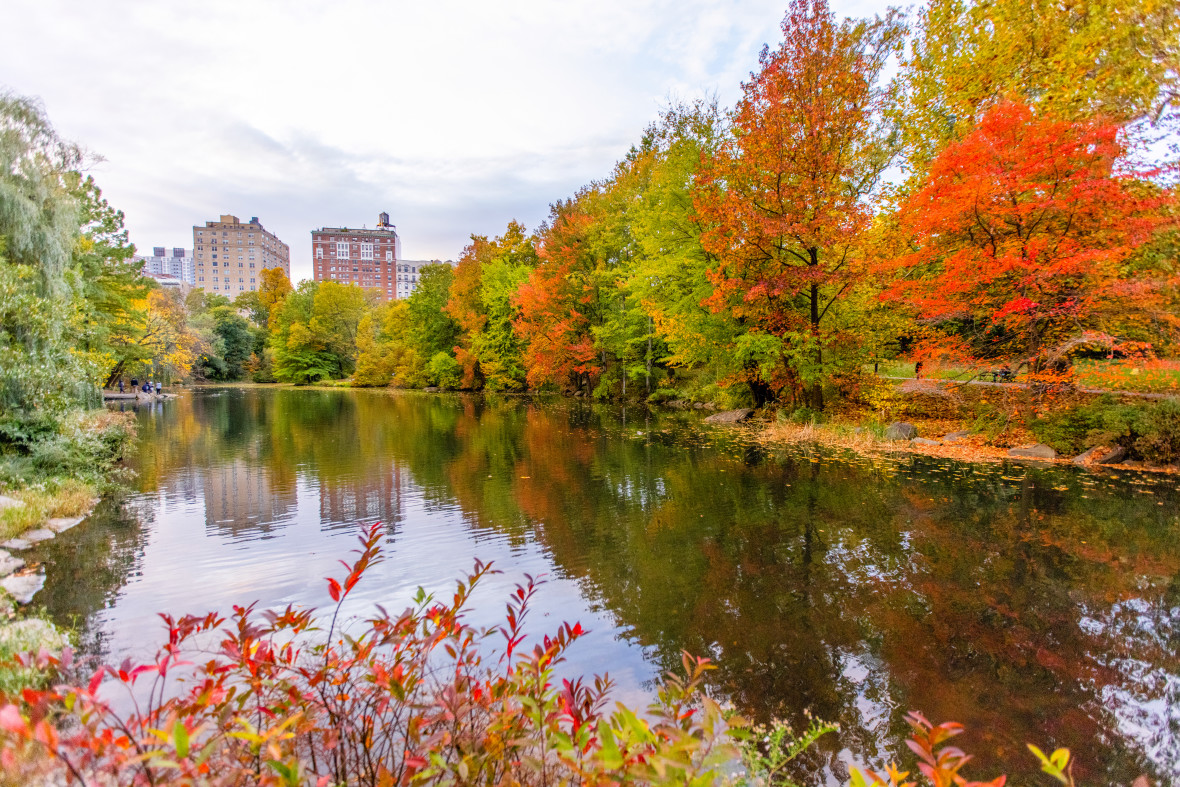
If fall foliage is your thing, then head to the park entrance at 103rd Street and walk over to the Pool, where Jesus says you’ll find some of autumn’s best leaf peeping opportunities. From the Pool, you can follow a walking path into the North Woods along the Loch, a narrow stream with three small waterfalls that cuts through the Ravine, a valley that crosses the northern part of the park from west to east. This is another excellent birdwatching spot, as well as a place to find seclusion amidst the trees.
Cathedral Pkwy (110 St) (B/C)
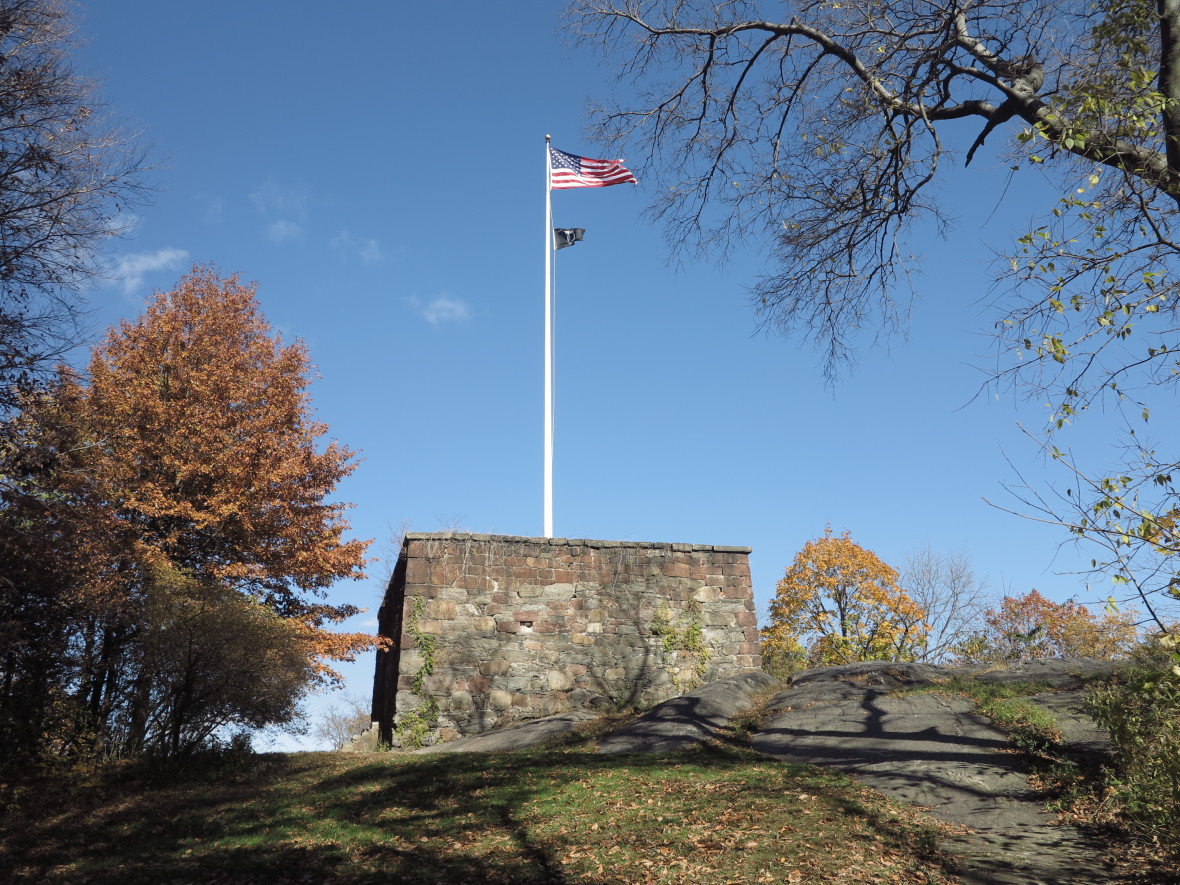
Not far from the park’s northwestern entrance, visitors can find a remnant of New York’s early colonial history at the Blockhouse, a former small fort erected in 1814 as part of the city’s planned defense against a potential British attack during the War of 1812. Though the fort was never used, the Blockhouse survived and was integrated into the park’s design. It stands today as the oldest building in Central Park.
Central Park North (110 St) (2/3)

Halfway between Malcolm X Boulevard and Fifth Avenue on Central Park North is the Gate of the Exonerated. This entrance — the first named since 1862 — was dedicated in 2022 to the Central Park Five, five teenagers who were wrongfully accused and convicted of assaulting a jogger in 1989; the convictions were overturned in 2002. In conjunction with the gate dedication, Central Park maintains an exhibit at the nearby Charles A. Dana Discovery Center that presents the history of the park’s named gates. The Dana Center, meanwhile, is also the spot for the Harlem Meer Performance Festival — a local music festival held every summer — and a holiday light show and display in the winter.
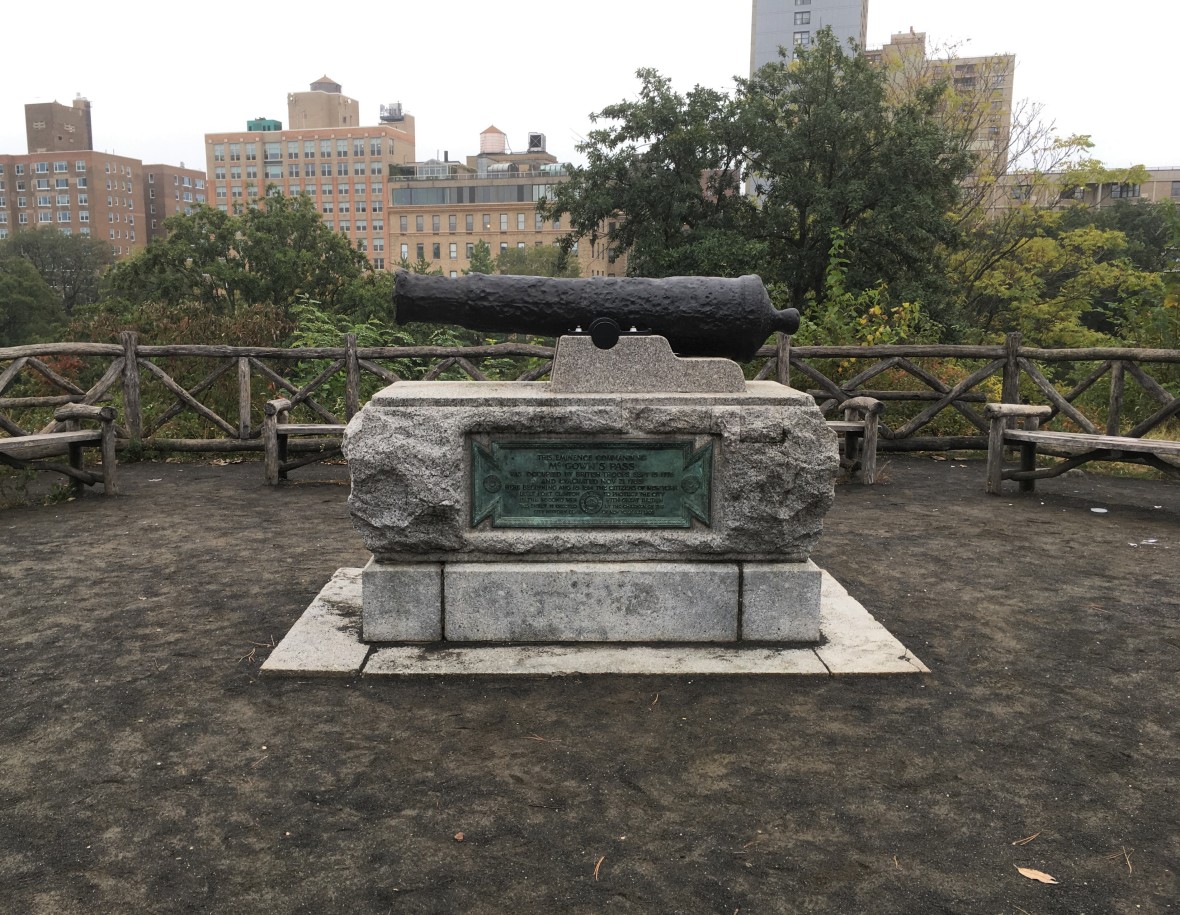
This part of the park is also the site of the Harlem Meer. Fishing is a popular pastime at the Meer, but simply taking a lap around it is a pleasant way to pass a day. The nearby Davis Center at the Harlem Meer, which is replacing the Lasker Rink and Pool, will operate year-round with a robust offering of inclusive, family-friendly activities as well as improved access to the Ravine woodland for nature-based activities. On the southeast side of the Meer are Nutter’s Battery, McGowan’s Pass, and Fort Clinton, the sites of two overlooks and a gatehouse that held strategic military importance during the colonial era. McGowan’s Pass was where the former Kingsbridge Road, which spanned the length of Manhattan, once passed. Nutter’s Battery and Fort Clinton were part of a larger chain of fortifications, including the Blockhouse, designed to protect Manhattan from an invasion from the north.
103 St (6)
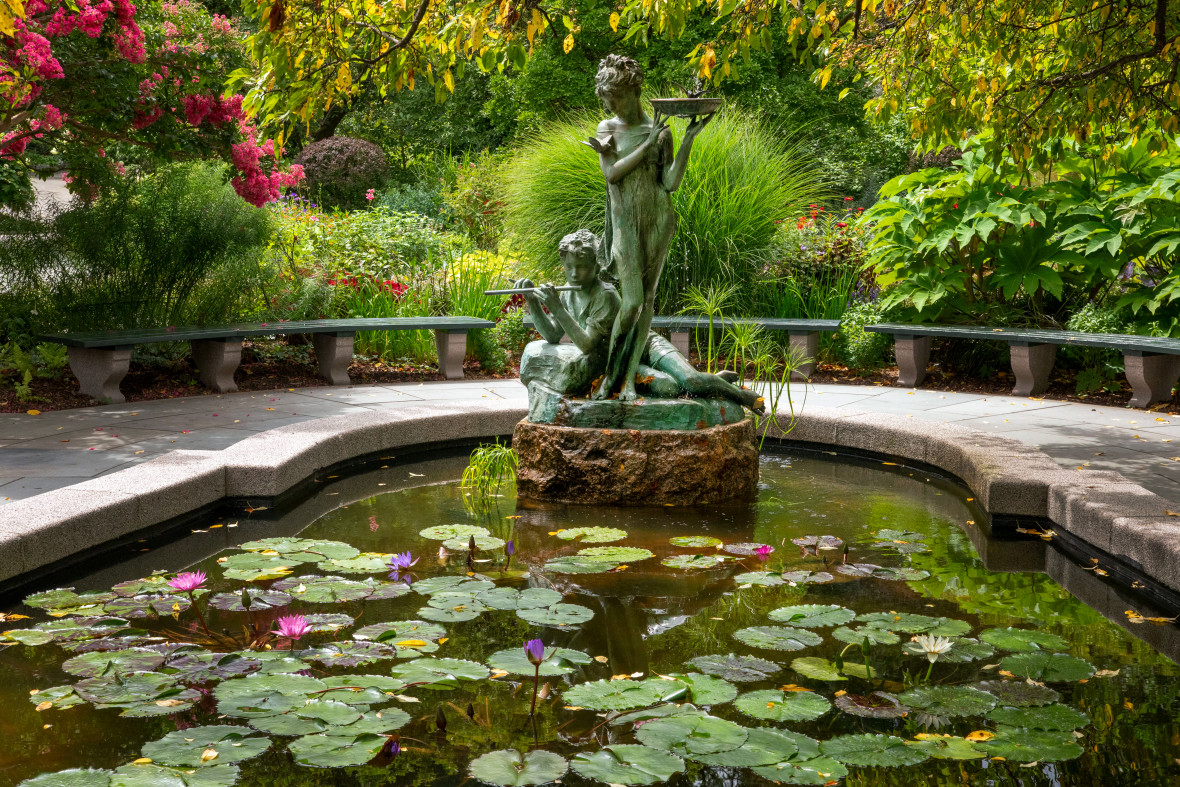
Walk north on Lexington Avenue to 105th Street and enter the park through the wrought-iron Vanderbilt Gate to access the Conservatory Garden, a six-acre formal garden that once was the site of a greenhouse that grew plants for the park’s landscaped areas. The Conservatory Garden is divided into three sections and styles: the North Garden is French, the Center Garden is Italianate, and the South Garden is English. Jesus recommends coming here in spring to see the crabapples and tulips in bloom, or to come in the fall for the chrysanthemums. And at the nearby North Meadow Butterfly Gardens, established in 2000, over 50 species of butterfly can be found flitting amidst the flowers in a space designed to support these vitally important pollinators.
96 St (6)
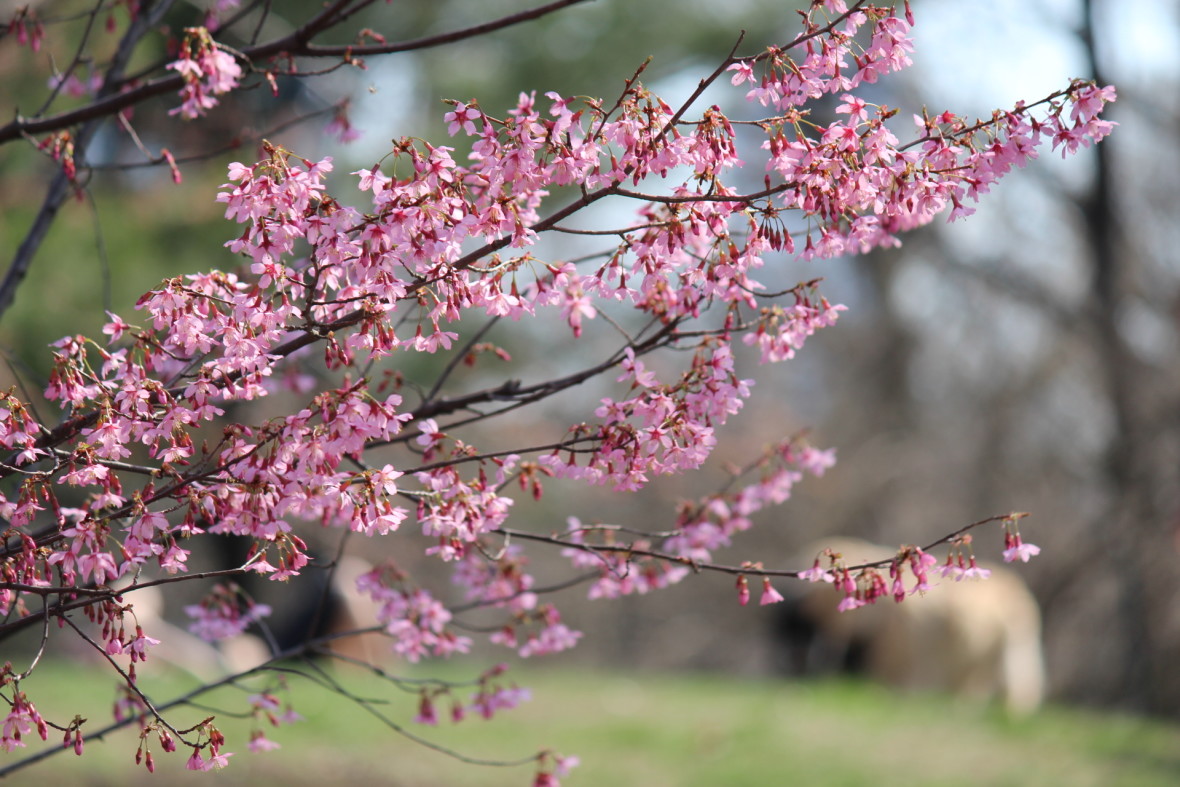
This entrance takes you to the east side of the Reservoir, which, to Jesus, is the best place to go in early spring to catch cherry blossoms in bloom. The park has both Yoshino and Kwanzan cherry trees: the former were gifted to New York by Japan in 1912 and usually bloom in April, producing white and pink flowers and petals; the latter are smaller trees and are typically in bloom in May, creating a burst of deep pink leaves that then change color throughout the year.
86 St (4/5/6) & 77 St (6)
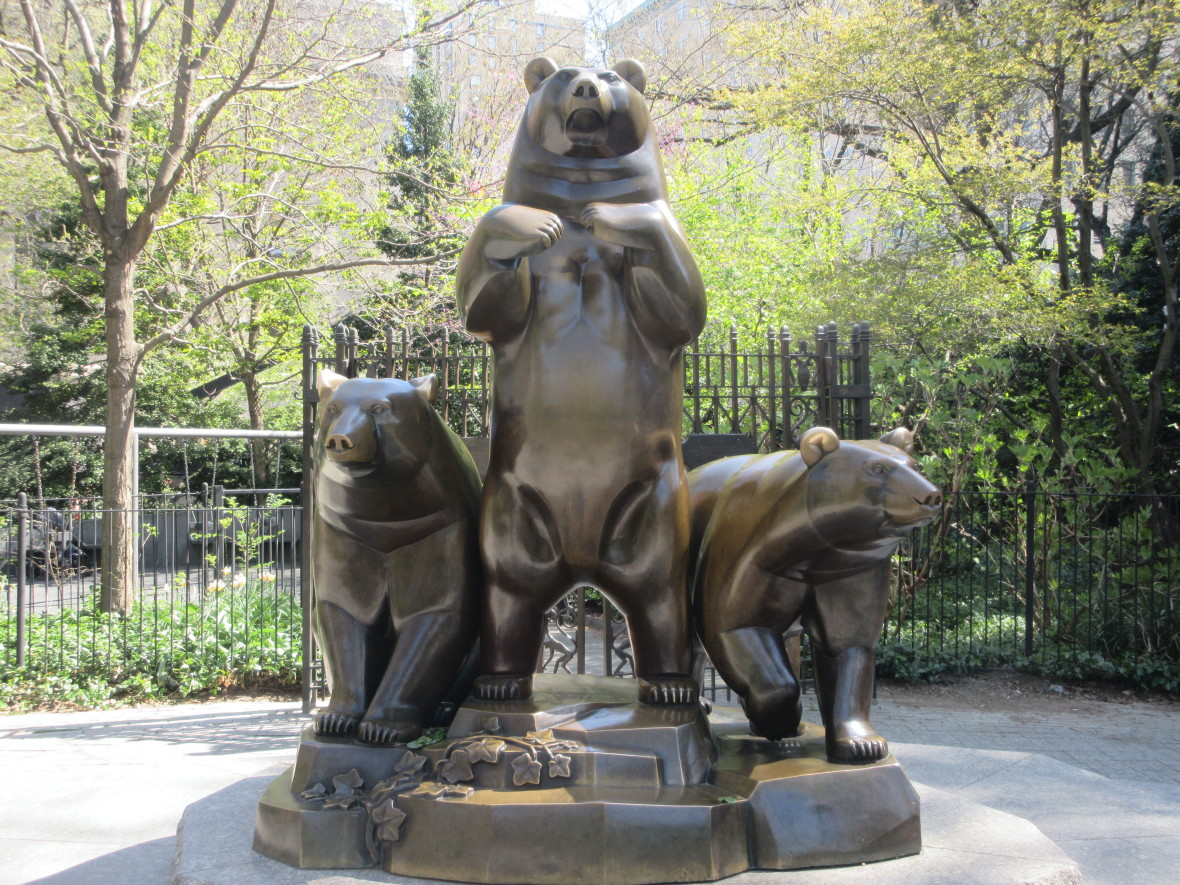
There are entrances at each end of the Metropolitan Museum of Art, which dominates the east side of the park. Go in via 85th or 84th Street and you’ll find the Ancient Playground, which took its cues from the Met’s Egyptian wing and the Temple of Dendur and is a fun example of adventure-style playground design. Down at 79th Street, meanwhile, is the Smadbeck-Heckscher Playground, more often referred to as the Three Bears Playground due to the sculpture of three bears by its gates. This playground is ideal for toddlers and small children.

Behind the Met stands Cleopatra’s Needle, a 220-ton obelisk that stands 69 feet high and was built 3,500 years ago in Egypt. Given to the city by the government of Egypt in 1869, the sculpture — one of two that originally stood first in the ancient city of Heliopolis and was moved by the Romans to Alexandria and the Caesareum temple built by Cleopatra — was erected in the park in 1881 on a hill called Greywacke Knoll.
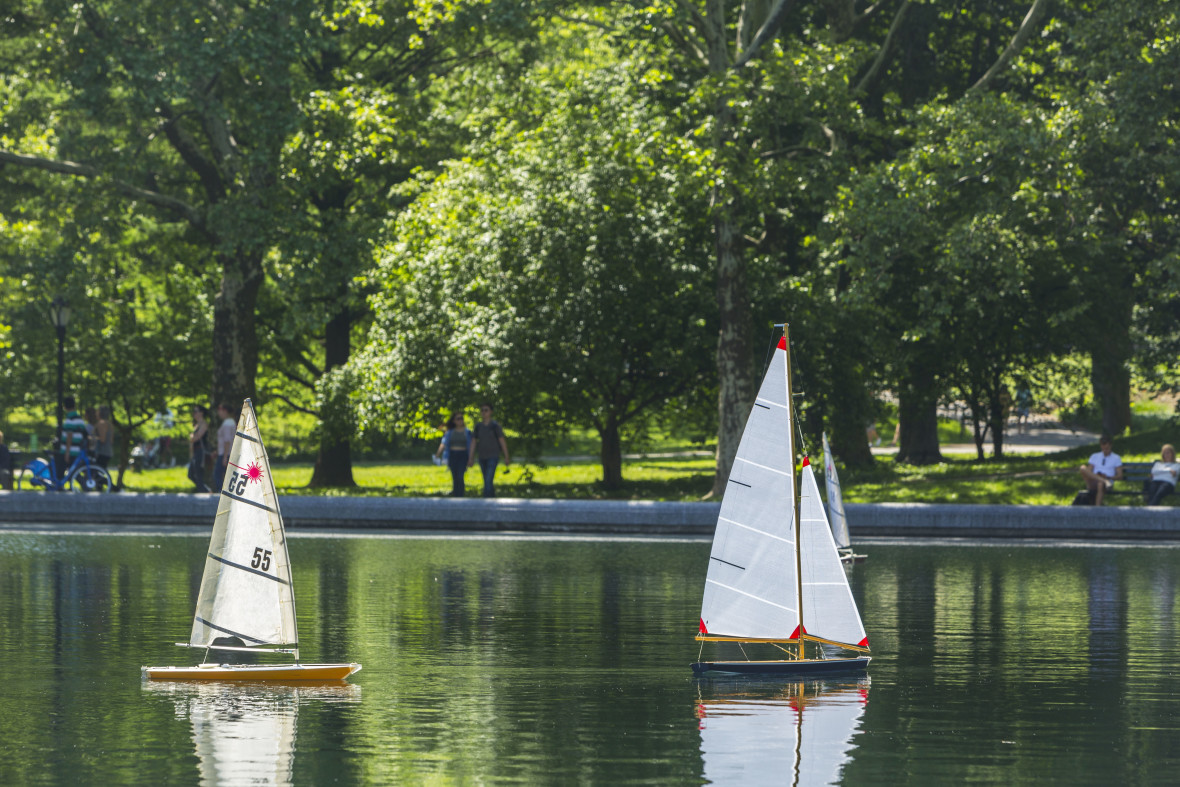
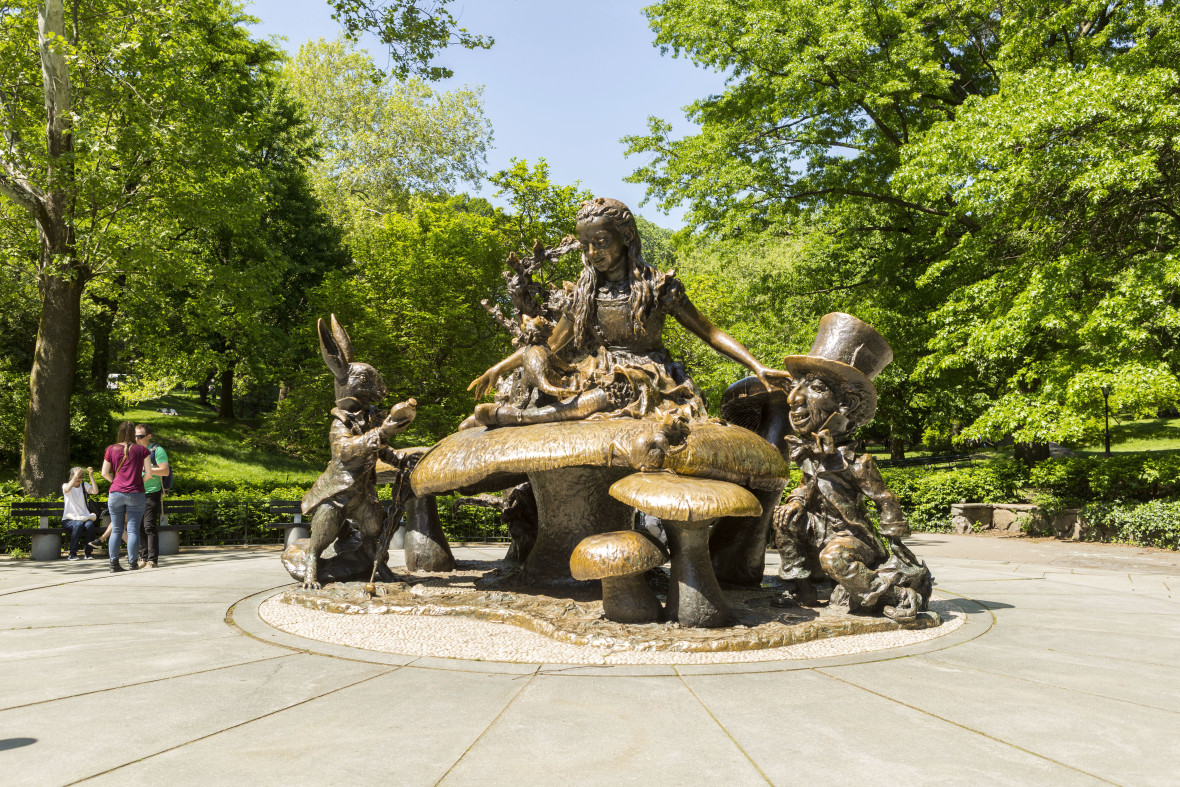
Closer to 77th Street is Conservatory Water, a small pond best known as a spot where kids and adults pilot model boats, which can be rented at the Kerbs Boathouse (which also has a cafe and restrooms). This is a great spot for children, which is also reflected in the two sculptures nearby: one of Alice in Wonderland, and one of the Danish author Hans Christian Andersen, who wrote (among many others) The Little Mermaid and The Princess and the Pea.
68 St-Hunter College (6)
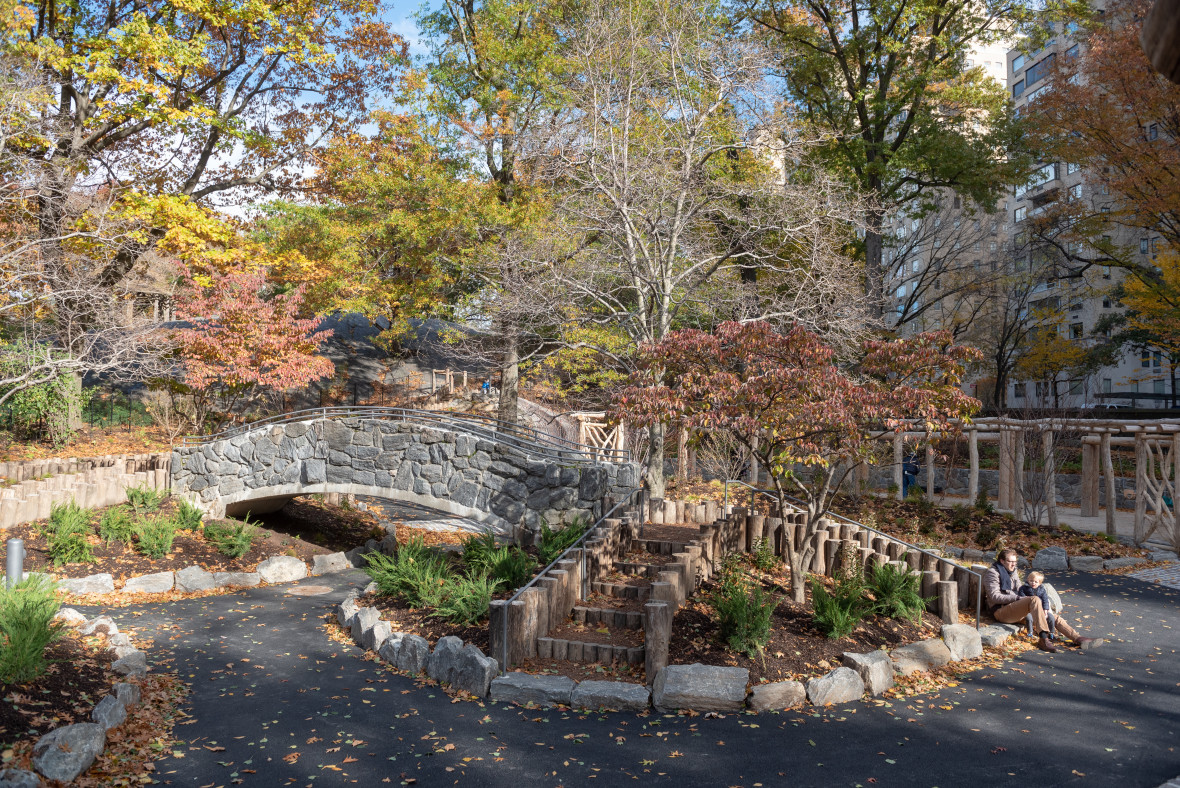
This station is close to Rumsey Playfield, the open-air venue for Summerstage concerts. Make your way south and you’ll come to The Dene, a section with rocky outcroppings and grassy hills that is the site of the Dene Slope, a landscaped meadow of native plants and wildflowers. It's also the location of the Billy Johnson Playground, which is essentially Central Park in miniature: It has trails, a replica of the Gapstow Bridge, and two granite slides that mimic sliding down the park’s rocks.
The park entrances here — at 65th and 66th Streets — are the ones closest to the Central Park Zoo, which was opened in 1934, and the Mall, a long pedestrian promenade that leads to Bethesda Terrace and plays host to dancers, street performers, skateboarders, and many more. The lower half of the Mall is known as Literary Walk because of all the statues of authors there, including Shakespeare, Robert Burns, and Sir Walter Scott.
Central Park is open every day from 6:00 a.m. to 1:00 a.m. For more information on the Park, its history, its attractions, and its amenities, check out the Central Park Conservancy’s website, where you’ll find detailed maps of all the locations mentioned in this guide, as well as an events calendar and much more about what to do and see in the Park.
Subway
Central Park is served by these 15 subway lines, all of which have stations next or close to the park



